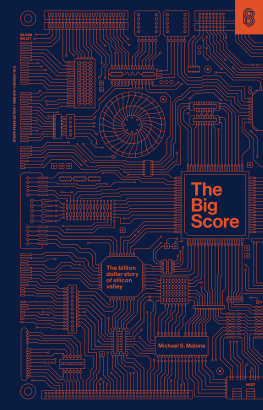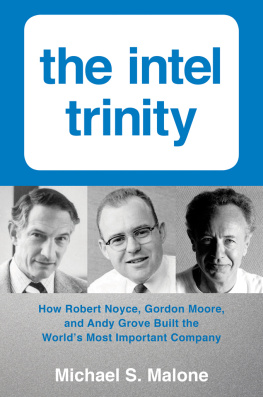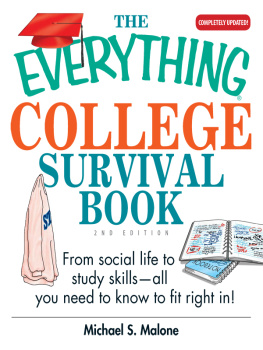For Carol
Shockley and the Pirates
Hewlett-Packard wasnt the only electronics company founded in Santa Clara Valley during the 1930s. There was a second important scientific laboratory at Stanford besides Termans. This one was in physics and run by Dr. William Webster Hansen.
The star pupils in Hansens class were two brothers, Sigurd and Russell Varian, children of immigrant parents whod come over from Ireland in 1903. The Varian brothers were local boys; in fact, they went to grammar school across the street from the home of triode inventor Lee De Forest.
Neither boy was a particularly good student: Sigurd out of indifference, Russell because of a learning disability that kept him perpetually behind in reading and arithmetic. The Varians lived in a small frame house on a quiet Palo Alto backstreet.
More exactly, an occasionally unquiet backstreet. Mr. Varian was a frustrated poet and playwright who fed his family through odd jobs, such as working as a masseur. He was also an intellectual and a bit of a bohemian, and the Varian house was perpetually filled with literati.
The wonder of the Varian brothers was that they could work together at all, so opposite were they in every way. Sigurd, the younger, was handsome, polished, energetic, and equipped with a mind adept at working out the fine details of an idea. Russell was huge, with oversize features and spiky hair, so uncoordinated he was dangerous in a small room, a genius at coming up with a new idea, but natively incapable of following that idea through to its logical end. The success of the Varian brothers seems to be a rare case of two individuals so different, they match.
In 1914, when Russ was 16 and Sig 13, the Varian family moved to Halcyon, California, a tiny town almost halfway between San Francisco and Los Angeles in the dry coastal mountains. There, Mr. and Mrs. Varian opened a general store and post office. Both young men finished high school at about the same time; Russ by then was 21 and only graduated because he learned to memorize what he read during the first slow pass through each assignment.
At this point, the lives and careers of the two brothers diverged for more than a decade. Sigurd became enamored with the romance of the airplane. And he couldnt have picked a better time, as the federal government was all but giving away surplus (and usually deteriorating) World War I aircraft.
As Sigurd himself described it: Every young fellow who had lain on his back in the tall grass dreaming of flying coils could now buy a real airplane still in its original crate, with glistening wingsand maybe dry-rotted spars. But who cared about dry rot? In fact, who knew what it was anyhow?
Sig soon had his own plane. By mid-decade, he was running his own flying school. It was a wild period, with Sig and his friends and students jury-rigging their biplanes to keep them in the air in the face of increasing spare-parts shortages. According to Sig Varian, unusual measures were often taken to get the patched-up heaps homefrom pounding in nails for added weight on broken propellers to having someone straddle the engine on the flight home squirting flammable fluid into the carburetor.
We smashed our planes all over the state of California, Sig recalled. We cracked up in ditches, ran over harrows, flew through fences, and one unlucky pilot ran into a family of hogs. We found out a lot about farming, and the farmers found out a lot about flyingeach to his own disgust.
After crashing into wheat fields, what more could a young aeronaut want than to crash into exotic locales? In 1929, Sig signed on with the new Pan American World Airways to fly its new MexicotoCentral America route.
He stayed with Pan Am on this route for six years, occasionally landing several hundred miles short of the runway in some all but impenetrable jungle. Sig also married the daughter of a British consul in Mexico.
During this same period, brother Russell was cutting his own special path. Against all odds, he was accepted to Stanford in 1919. Russ promptly packed his backpack and hiked the 225 miles to Palo Alto. On his arrival, he sent his folks a letter announcing that the trip had cost only 10 cents.
By 1927, while his brother was still plowing fields in Halcyon, Russ had earned his masters degree in physics. He had also become fast friends with Bill Hansen, the physics lab director, a machinists son who had a reputation for both brilliance and an antipathy for rules (he was famous for having passed a German final exam a few years before by memorizing the professors exams for a number of previous years). Hansen and Russ Varian were as alike as the two brothers were different. The two tall roommates could often be seen striding around the campus in deep technical conversation.
Upon graduation, Russ Varian went to work for an oil company. A year later he joined another Bay Area electronics pioneer, Philo Farnsworth, in San Francisco and spent four years helping in the development of television.
In 1935, Russ Varian returned to Stanford to continue his research in physics. He was now 37. That year Sigurd returned from Mexico, and the two brothers, with baby brother Eric, decided to fulfill a lifelong dream and set up a family laboratory.
The brothers had many ideas for projects, but in the end they settled upon Sigurds obsession. As a pilot, flying over wild and often dangerous terrain, Sig had developed an understandably deep and abiding love for instrumentation and navigational aids. Later, as the horrors of the Spanish Civil War were explained to him by his consul father-in-law, Sig became haunted by the image of defenseless people under attack by planes shielded in darkness. What kind of technology would enable the people on the ground to fight back? He had written to Russ about his dream during the years they were apart.
With the new family laboratory underway, Russ decided to call on his old roommate, now a tough professor of physics, to see if he had any ideas.
In particular, Russ was interested in the latest developments on Hansens electromagnetic resonatornamed a rhumbatron by a graduate student, recalled Hansen, because the current moved very little at the top and bottom and a great deal around the middle section. Russ thought the rhumbatron might be the key to Sigs device, and he invited Hansen down to Halcyon.
The timing was perfect. Hansen was in the midst of taking flying lessons and could assimilate the ideas put forward by master pilot Sig Varian.
The three men agreed that the device Sig had in mind would sweep ultrashort light waves across the sky in an invisible beam, reflecting back an echo of any solid object. They also agreed that the vacuum tubes available to produce such high-frequency waves had inefficient power to do the job. Sig suggested that he and his brother go to Stanford and see if they could get university support for their project. Russ was rather dubious, he would say later, but went along anyway.
Dr. Daniel Webster, head of the physics department, was, thankfully, also a flier. He had even built bomb sights in the Great War. Webster was impressed and went to plead the mens case before the university president, Dr. Raymond Wilbur. Despite the Depression, Wilbur agreed to make the Varian brothers research assistants, without pay, and gave them $100 in project expenses in exchange for a cut of whatever came out of the experiments. (The $2 million in royalties Stanford eventually earned from the project was more than an acceptable return on investment.)
These were truly starvation wages, and the project quickly burned up most of the brothers savings. Russ saved on meals by foraging among the fruit trees on campus.
Helping to propel the research project along were a number of interested graduate students in electronics and physics, among them Bill Hewlett.
Next page




